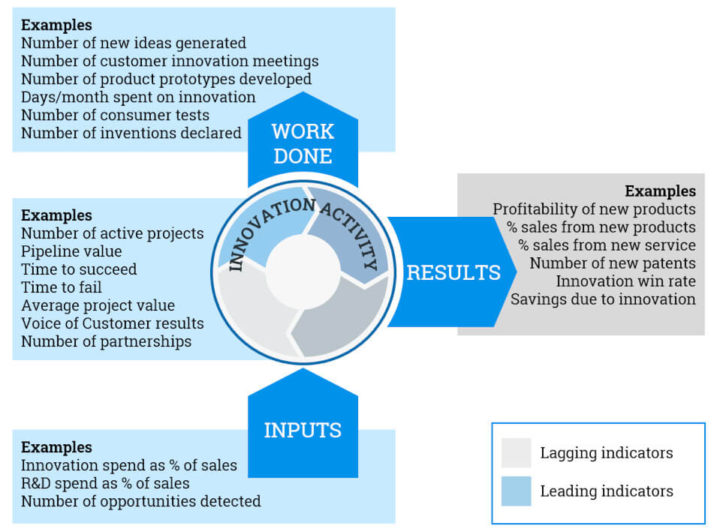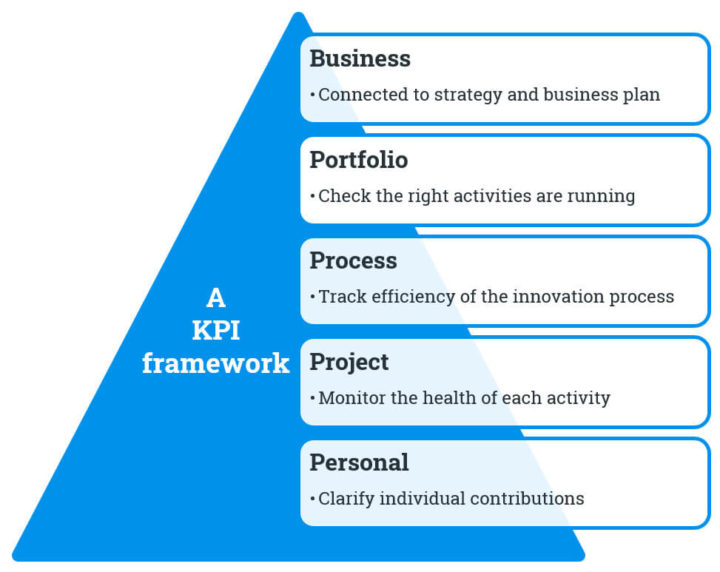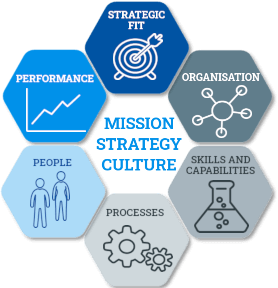Get the measure of innovation: choose indicators that drive performance
Choosing the right key performance indicators (KPIs) can give you an innovation advantage and help you deliver innovation. On the other hand, measuring the wrong indicators is not only unhelpful, it can have a negative impact compared to not measuring anything at all. How do you choose the right indicators for your business?
Innovation performance measurement – important but room to improve
According to the PDMA, 63% of top performing companies employ metrics to measure and track innovation performance. BCG have identified “Performance Management and Metrics” as a platform for effective innovation in their innovation-to-impact benchmarking framework (i2i by BCG). In 2008 McKinsey found that 16% of companies were not measuring innovation metrics at all and as highlighted by a 2021 Forbes article this was still around 12%. The same Forbes article reported that around 54% of respondents considered innovation metrics as still “taking shape” in their company.
Here are some tips about how to get your performance measurement approach right.
TIP 1 – Don’t measure more than you need
At a business level, you will be interested whether innovation is delivering as you want it to. Many companies use the percentage of sales generated by new products as an indicator for this, but there are many more options you could choose from such as the profit generated by innovation, or the year-on-year growth.
The list goes on. And that’s just the start of the choices to make.
You will probably also want some indication that innovation will deliver in the future too. For that you could measure the flow of ideas into the pipeline or the overall value of the project portfolio. Or how about the average length of time it takes to develop a new product or the percentage of ideas converted into successful products?
What about the individual projects? Wouldn’t it be useful to know which ones are progressing and delivering according to plan and which ones need attention?
How about some notion of return on investment (ROI) per project or across the portfolio? What about the innovation climate in your company? After all, it’s important that teams are motivated if they are to successfully deliver innovation.
In short, the list of things you could potentially measure is very long. Too long. You will need to choose carefully if you want to avoid tying up your organisation with data – see mistake #1.
TIP 2 – Set up the indicators to ensure they drive what you want
You need to take great care to set up any performance indicator so that it will not have unforeseen consequences. British economist Charles Goodhart was researching monetary policy in the UK in the 1970’s and noted that “Any observed statistical regularity will tend to collapse once pressure is placed upon it for control purposes”. This observation was later expanded and generalised and became known as Goodhart’s Law: “When a measure becomes a target, it ceases to be a good measure“. What does this actually mean? It’s best illustrated by an example – see mistake #2.
TIP 3 – Start with the strategy
If you want to drive innovation, there are some things to do beforehand. You need to have defined what innovation is, what its role is in your company and what it needs to deliver over the strategic period. These elements form part of the Strategic Fit dimension of the Six Dimensions framework and they must be clear before you start looking for performance indicators.
Why? Because all the KPIs you use must tell you something about how well you are delivering the strategy. To do that, your Strategic Fit must be crystal clear.
For example, if you decide that strategically, your company needs to be seen as more innovative by customers and potential investors, it may lead you to build a performance indicator around the number of patent filings per year or the number of innovation awards won.
TIP 4 – Use mostly Leading KPIs with optional support from Lagging KPIs
As shown in box 1, performance indicators can be lagging or leading.

Lagging indicators such as the widely used % of sales from new products have the advantage that they measure the direct result of innovation. Their weakness is they are measuring after the results are achieved, so they cannot be used to predict likely future performance.
Lagging indicators are useful for looking back at what has been achieved, to give you a view in the “rear view mirror”. But if you really want to be able to anticipate performance issues you need leading indicators.
Leading indicators measure activity, work and inputs that take place before the results are achieved. In principle, they can be used to anticipate future performance, however, their weakness lies in the fact that they do not directly measure the desired end result. Because of this, you have to be very careful in choosing and setting up leading indicators.
A good approach is to identify the issues that block or enable your innovation performance and construct KPIs around these. For example, if you know that most of your new product ideas come from customers, you may set up a leading KPI on the number of innovation-oriented customer interactions each month.
TIP 5 – Consider different organisational levels
Top-down business indicators are fine, but if you want to influence people’s behaviour you need to be able to cascade down through the organisation and make it meaningful at a human level. You should consider different levels and dimensions of your business. Box 2 shows an example framework that may help you. The objective is not to have indicators at all levels, but avoid only having indicators at one of them. Go for balance and remember the first tip – be selective!

TIP 6 – You should use different KPIs for different types of innovation
If you are simultaneously running different types of innovation programmes you are not obliged to use the same KPIs across the board. Indeed, there is no “one size fits all” set of KPIs. Just imagine a company that has a short-term product development programme and a new business unit starting up with a totally new business model. Using different KPIs for these two innovation activities will allow it to drive each one effectively.
The same logic applies when there is a difference in maturity between innovation programmes.
Imagine you run a well-established short-term product development programme and have just started exploring long-term breakthrough innovation that will deliver (maybe) in 5 years. You will probably apply only leading indicators to the long-term work because concrete results will take time to come. The short term activity will be covered by leading indicators too (though probably different ones to the long-term programme) and possibly one or two lagging ones.
TIP 7 – Start simply and adjust
When you start setting KPIs, keep it simple. Better to measure one thing and spend time analysing and acting on what it tells you than trying to measure 3 elements and doing it badly. Then feel free to add other measures or adjust your KPI. Companies change and your KPIs should too. Regularly review the effectiveness of your KPIs. Do not be afraid to stop using a KPI if it does not help you drive innovation.
Summing it up
Performance measurement is important if you want to drive innovation in your company. Top innovators do it, but not many companies do it well so if are good at it, you will reap dividends. My top tips can be summarised as:
Want to know more?
This and other key success factors are covered in my Six Dimensions Framework for better innovation. You can find out more about the Six Dimensions here. Feel free to contact me if you have other questions or comments.




